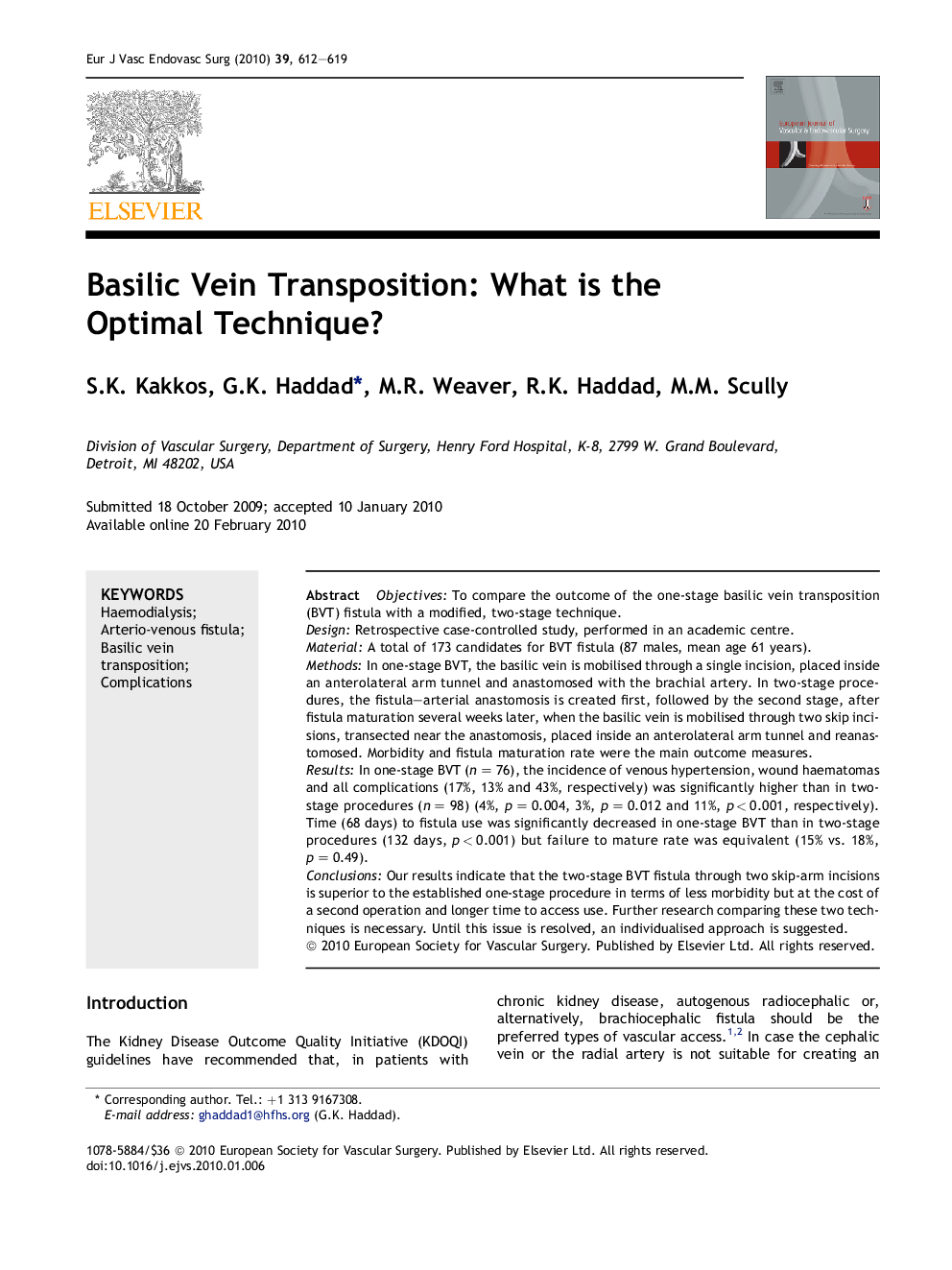| کد مقاله | کد نشریه | سال انتشار | مقاله انگلیسی | نسخه تمام متن |
|---|---|---|---|---|
| 2912704 | 1575505 | 2010 | 8 صفحه PDF | دانلود رایگان |

ObjectivesTo compare the outcome of the one-stage basilic vein transposition (BVT) fistula with a modified, two-stage technique.DesignRetrospective case-controlled study, performed in an academic centre.MaterialA total of 173 candidates for BVT fistula (87 males, mean age 61 years).MethodsIn one-stage BVT, the basilic vein is mobilised through a single incision, placed inside an anterolateral arm tunnel and anastomosed with the brachial artery. In two-stage procedures, the fistula–arterial anastomosis is created first, followed by the second stage, after fistula maturation several weeks later, when the basilic vein is mobilised through two skip incisions, transected near the anastomosis, placed inside an anterolateral arm tunnel and reanastomosed. Morbidity and fistula maturation rate were the main outcome measures.ResultsIn one-stage BVT (n = 76), the incidence of venous hypertension, wound haematomas and all complications (17%, 13% and 43%, respectively) was significantly higher than in two-stage procedures (n = 98) (4%, p = 0.004, 3%, p = 0.012 and 11%, p < 0.001, respectively). Time (68 days) to fistula use was significantly decreased in one-stage BVT than in two-stage procedures (132 days, p < 0.001) but failure to mature rate was equivalent (15% vs. 18%, p = 0.49).ConclusionsOur results indicate that the two-stage BVT fistula through two skip-arm incisions is superior to the established one-stage procedure in terms of less morbidity but at the cost of a second operation and longer time to access use. Further research comparing these two techniques is necessary. Until this issue is resolved, an individualised approach is suggested.
Journal: European Journal of Vascular and Endovascular Surgery - Volume 39, Issue 5, May 2010, Pages 612–619